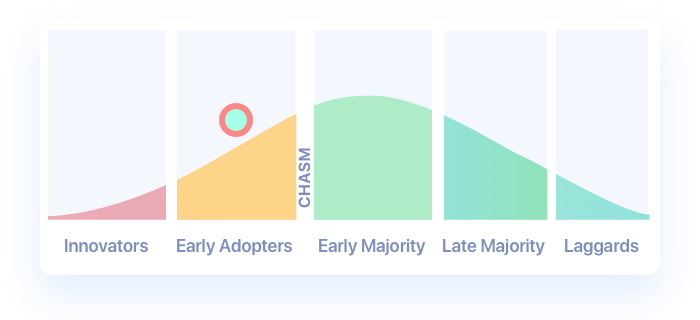Machine Learning
Machine learning is a field of artificial intelligence that uses statistical techniques to give computer systems the ability to "learn" (e.g., progressively improve performance on a specific task) from data, without being explicitly programmed.
The name machine learning was coined in 1959 by Arthur Samuel. Machine learning explores the study and construction of algorithms that can learn from and make predictions on data – such algorithms overcome following strictly static program instructions by making data-driven predictions or decisions, through building a model from sample inputs. Machine learning is employed in a range of computing tasks where designing and programming explicit algorithms with good performance is difficult or infeasible; example applications include email filtering, detection of network intruders, and computer vision.
Position on the Adoption Curve

Presentations about Machine Learning

Human-Centric Machine Learning Infrastructure @Netflix

Artwork Personalization @Netflix

Machine Learning for Handwriting and Sketch Recognition

Machine Learning for Handwriting and Sketch Recognition

Zero to Production in Five Months @ ThirdLove

Michelangelo - Machine Learning @Uber

Nearline Recommendations for Active Communities @LinkedIn

Jupyter Notebooks: Interactive Visualization Approaches

Fairness, Transparency, and Privacy in AI @LinkedIn
Create a Fair & transparent AI Pipeline with AI Fairness 360

Create a Fair & transparent AI Pipeline with AI Fairness 360

Enabling ML with Apache Beam and Event Mesh
Interviews
Human-Centric Machine Learning Infrastructure @Netflix
What is the focus of the work you do at Netflix?
I'm with the machine learning infrastructure team at Netflix. We work with about a hundred data scientists who solve all kinds of business problems. It’s not only video recommendations, but we also help answer many other questions to make Netflix an even better experience. We help all these data scientists to be more productive and make it easier for them to start prototyping their models to produce business value.
Netflix has a 'paved path’ approach when it comes to software and microservices. Is it the same thing when it comes to machine learning?
It is very much the same thing. We want to provide a 'paved path' so there's always a very clear, recommended way to do things. This is especially important for data science since there are many people from academia who are very adept at creating really strong theoretical models but when it comes to actually taking something to production and making it operationally solid, typically they require a lot of help. Integrating with a platform like Netflix can be non-trivial. At the same time, we want to balance that with the idea of freedom and responsibility, so people still have the freedom to choose the exact modeling approach they want to take. The platform has to be flexible.
See more interviews




